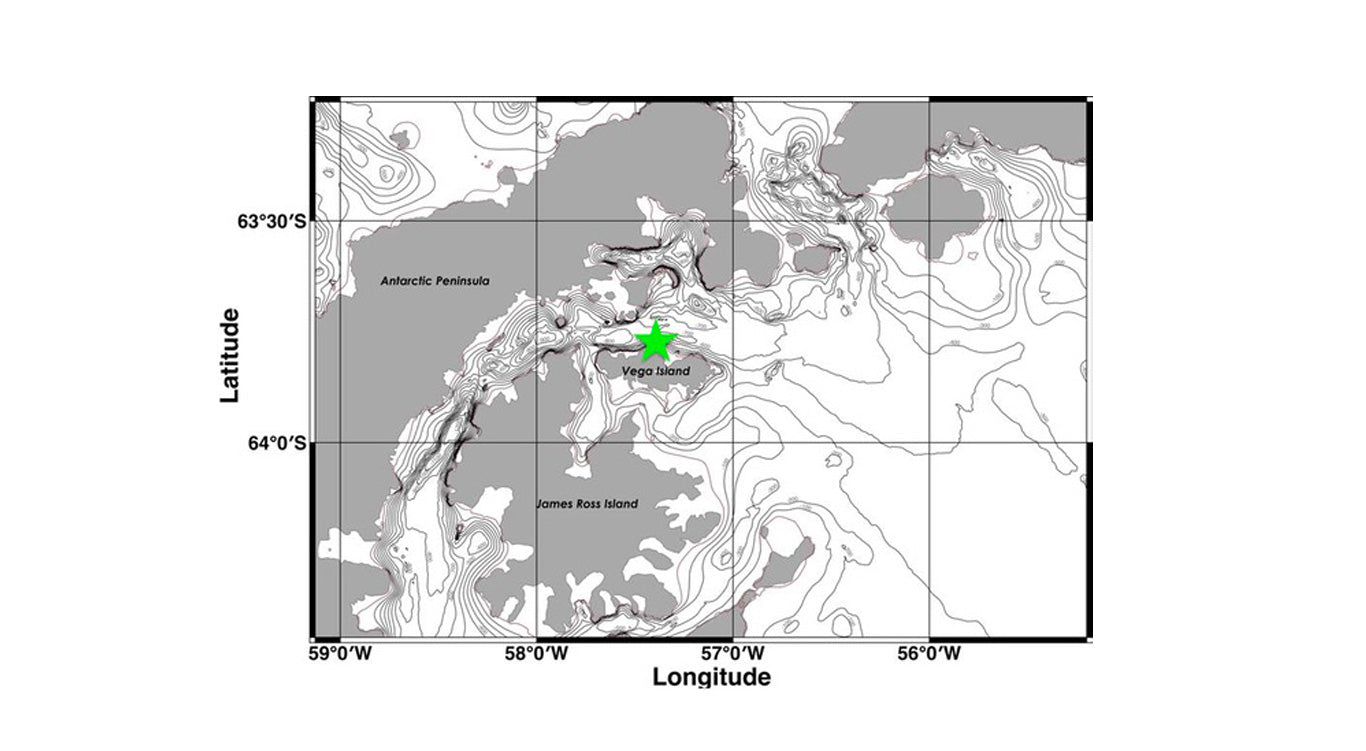Le cap Well-Met, écosystème marin vulnérable (VME)
La première initiative de la fondation The Wishful Squid a été de financer l’enregistrement d’un écosystème marin vulnérable (VME) en Antarctique, avec l’aide de la Dre Susanne Lockhart, biologiste de la mer et directrice scientifique de The Soap and The Sea. Situé au large du cap Well-Met, sur l'île de Vega, dans l'est de la péninsule Antarctique, le VME de The Soap and The Sea a été enregistré officiellement en octobre 2022.
Lisez le document de recherche de Susanne Lockhart (en anglais) montrant comment le site du cap Well-Met est le symbole des écosystèmes marins vulnérables. Son abondante flore au fond de l'océan révèle un assemblage complexe d'éponges de mer (y compris de grandes éponges de verre en forme de vase) et de coraux mous.
Les micro-réserves marines, les VME, sont des zones protégées, d'un rayon d'un mille nautique seulement, reconnues par la communauté internationale pour leur habitat et leur faune des fonds marins fragiles et uniques. En Antarctique, les coraux d'eau froide – parfois âgés de plusieurs centaines, voire de plusieurs milliers d'années – sont particulièrement riches en couleurs et en diversité, et ils fournissent un habitat essentiel à une étonnante variété de vie océanique. Le statut de VME protège ces habitats vitaux de la pêche de fond et de la pêche à la palangre, et ceci pour toujours.
Le processus de certification d'un VME en Antarctique est complexe et soumis à des accords et réglementations internationaux. Cela implique une collaboration entre plusieurs pays et organisations qui forment la Commission pour la conservation de la faune et de la flore marines de l'Antarctique (CCAMLR).
Il s’agit d’une démarche scientifique et réglementaire comportant plusieurs étapes:
Évaluation scientifique: Une étude scientifique détaillée est menée pour identifier les zones qui répondent aux critères d'un VME en fonction de leurs habitats uniques, de leurs espèces et de leur importance écologique.
Proposition et consultation: Une proposition est faite pour désigner une zone spécifique comme VME.
Examen réglementaire: Une proposition de VME doit passer par un examen en 3 étapes pour obtenir la certification:
1. Chaque été, la réunion annuelle de la CCAMLR sur le suivi et la gestion des écosystèmes (EMM), composée de scientifiques envoyés par les États/pays membres, examine la proposition soumise.
2. Le comité scientifique de la CCAMLR, composé de scientifiques envoyés par les États/pays membres, examine les avis qui lui sont transmis par les différentes réunions tenues entre les sessions.
3. Cette étape est plus politique. Elle est menée par des scientifiques, des représentants d'États, des diplomates, en présence de leurs avocats. Ils prennent les décisions officielles et finales en fonction des préavis qu'ils reçoivent du Comité scientifique.
Désignation: Si la Commission et ses États membres en conviennent, la zone est officiellement désignée comme VME et des mesures sont mises en place pour la protéger des activités humaines qui pourraient endommager ou détruire ses habitats et espèces uniques.
Pourquoi une première initiative en Antarctique ?
L’Antarctique est l’une des dernières grandes étendues sauvages de la Terre, un foyer pour les baleines, les phoques, le krill, les pingouins, ainsi qu’un écosystème sous-marin incroyablement diversifié dans lequel prospèrent les coraux d’eau froide. Pourtant, l’Antarctique est menacé par le changement climatique et la surpêche. Le réchauffement climatique fait fondre ses vastes calottes glaciaires, ouvrant de nouvelles zones à la pêche. La pêche à la palangre est particulièrement dommageable car les lignes traînent souvent le long des fonds marins, endommageant les coraux et d’autres espèces vulnérables. "Les coraux ont des centaines, voire des milliers d’années et les communautés coralliennes pourraient ne jamais se remettre de tels dommages", explique la Dre Lockhart dans un article publié dans “The Economist” le 12 mars 2020.
Et ce n’est pas qu'une question de faune. Les coraux d’eau froide de l’Antarctique jouent un rôle particulièrement important dans le captage et le stockage du carbone, atténuant ainsi le changement climatique. Contrairement aux arbres ou au varech, la structure de carbonate de calcium des coraux retient en permanence le carbone, qui sera finalement enterré sous le fond marin plutôt que d’être libéré à nouveau lorsque les tissus mous se biodégraderont. Alors que les forêts de varech se rétrécissent et que les récifs coralliens des eaux tropicales meurent, nous avons besoin d’autres zones de l’océan pour stocker le carbone.
La création d’aires marines protégées (AMP) est essentielle et urgente. Malheureusement, la mise en place d’une AMP en Antarctique est un processus très lent et difficile, en raison de la façon dont l’Antarctique est gouvernée. La CCAMLR fonctionne sur la base d’un processus décisionnel consensuel entre ses 27 États membres, ce qui signifie que tous les États membres doivent se mettre d’accord sur chaque décision prise par l’organisation. Les écosystèmes marins vulnérables peuvent aider à ouvrir la voie à la création d’aires marines protégées. Dès qu’il y a plusieurs VME dans une région, même de petite taille, il devient très difficile de justifier qu’une AMP n’est pas essentielle pour cette région.
Lire le document de recherche de Susanne Lockhart ici (en anglais).


